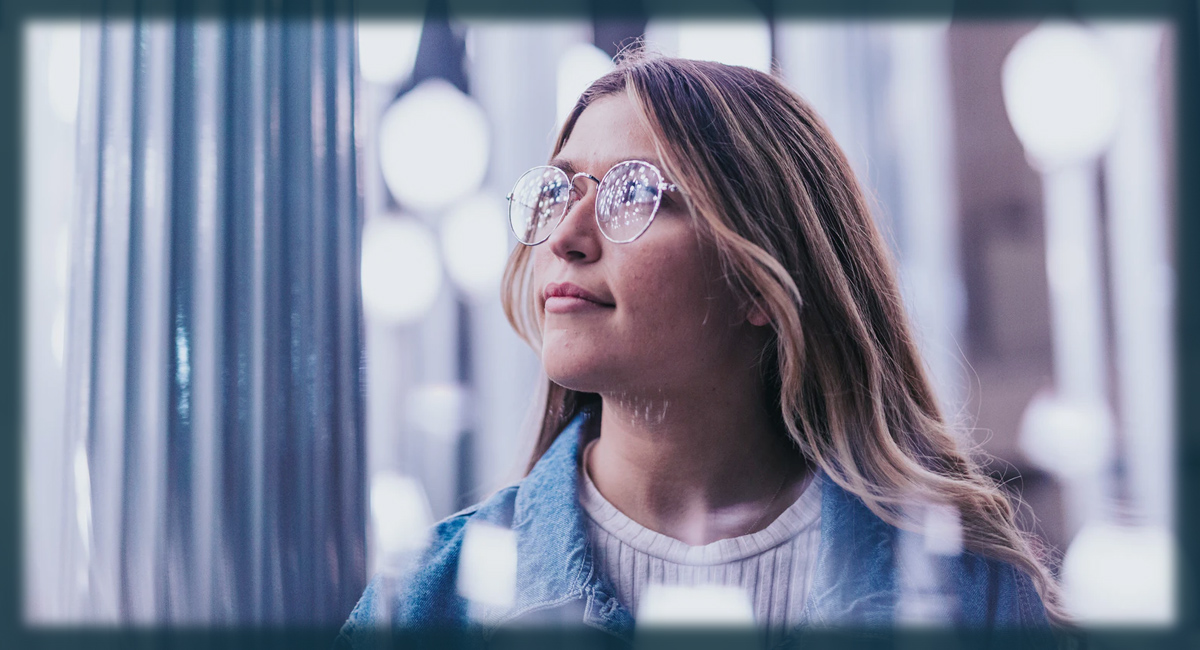Popular searches
Categories
Learn & Achieve
Collaborate & Lead
Deliver Value
Live Well
Make Better Decisions
Industry Knowledge
Sub categories
Learn & grow
Set & reach goals
Grow wealth
Be happy & healthy
Be more productive
Manage projects
Models

 0 saved
0 saved
 26.9K views
26.9K views
(2)
Share this with your network








Share this with your network




Overview
You're busy with too much to do and not enough time. You can keep running faster on that damn treadmill — or you can get smart with these mental models and frameworks to boost your productivity and get your time back.
ModelThinkers already has a range of models on this popular topic, and we'll keep adding more, but here are some to get you started.
This Playbook includes the following sections, select a heading to jump to that section.
PRIORITISE YOUR FOCUS
Once you've decided what to work on, the next question is how you work. Use these approaches to organise your time and work.
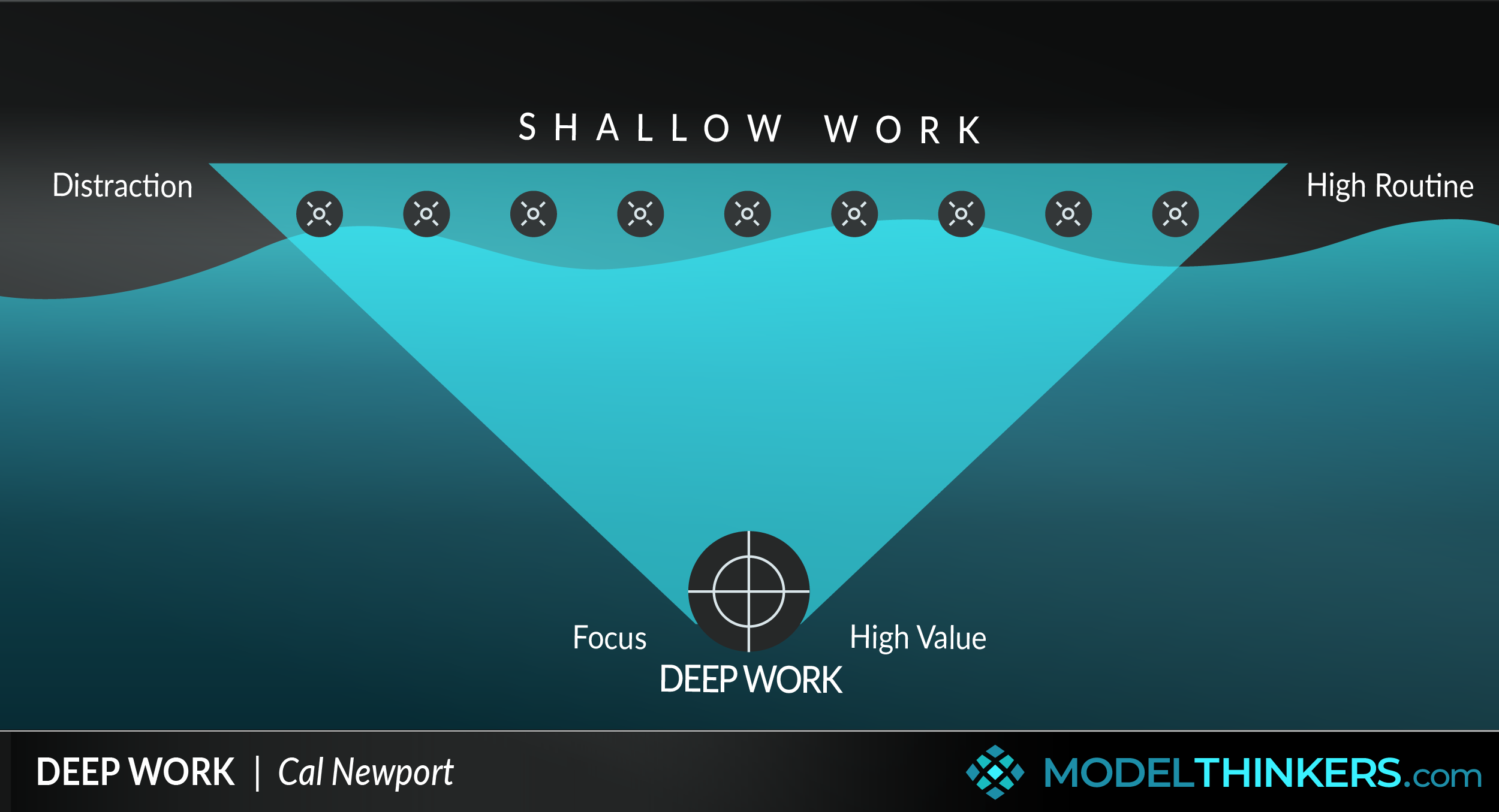

Multitasking is not a thing. There, we said it. You're not multitasking, you're switch tasking, and being less productive as a result. So why not use this model to schedule some uninterrupted, focused Deep Work? Combine it other models in this list (such as Pareto, Eisenhower Matrix and Kanban) to identify high-value tasks that require creativity and deep thinking to prioritise in those moments.
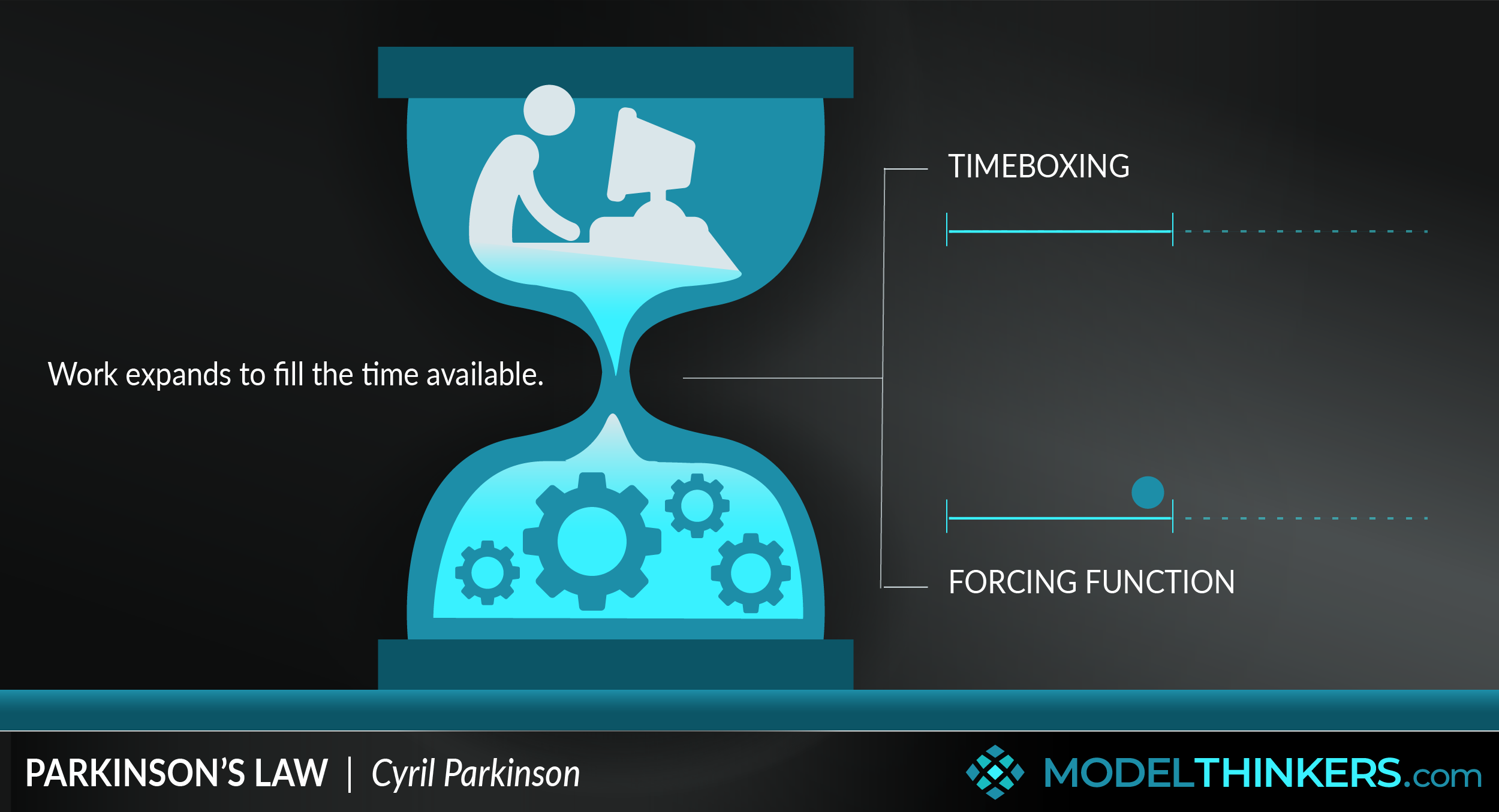
Parkinson's Law is a reminder that time will flow when left in open streams. Okay, we heard how that sounded like advice from a mysterious martial arts grandmaster, so let us make it more practical. Timebox and use Forcing Functions.

This popular productivity hack is all about combining 25m cycles Deep Work with 5m breaks for Diffuse Thinking. When applied consistently, it creates habits of focus while still providing opportunities for you for 'cognitive reset'. Click through to the model summary because there's more to it than you likely think.
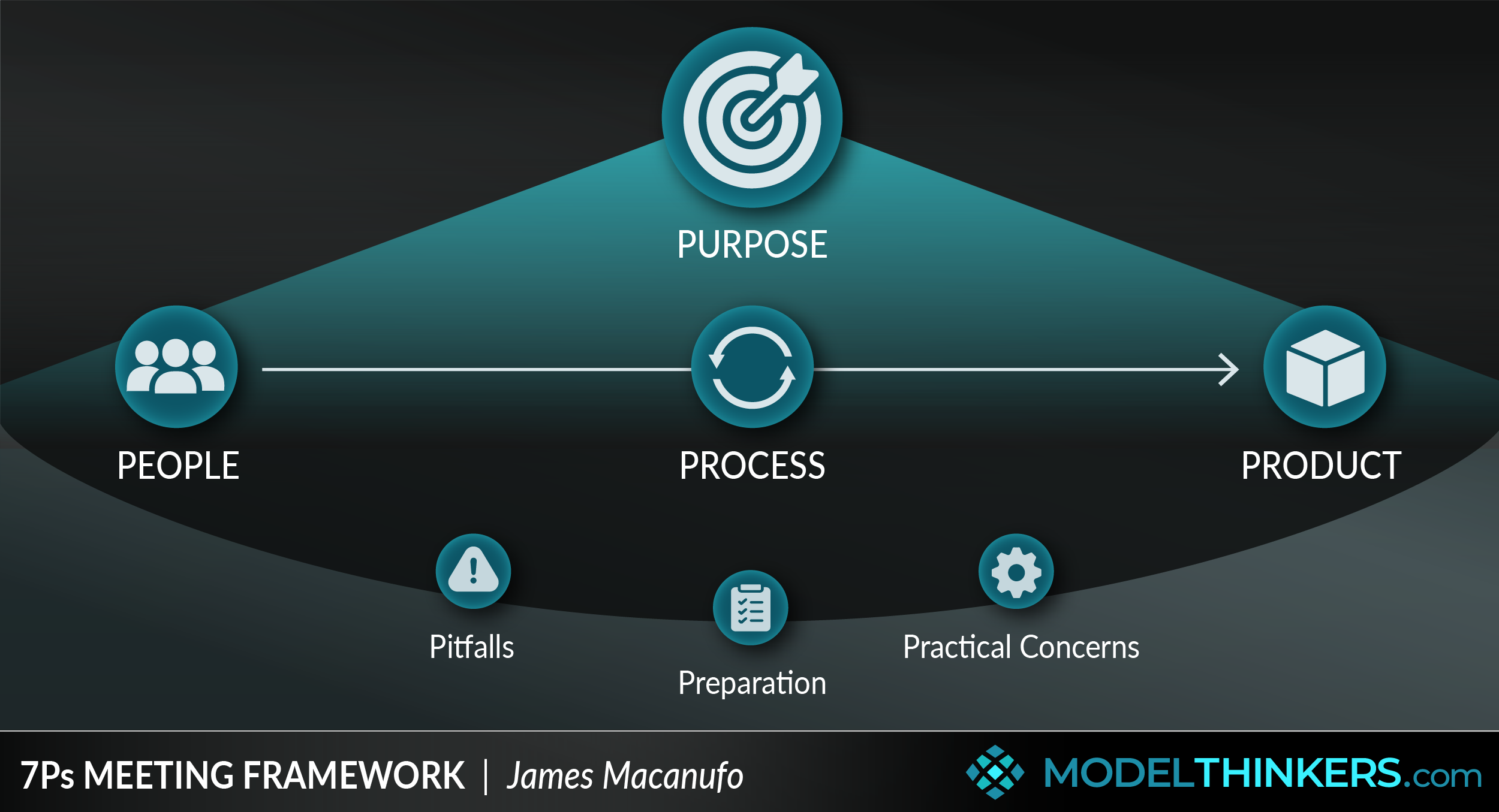
Every working day, you will spend hours and hours in meetings — some of them pointless, many more of them unproductive. So, it makes sense to include your productivity focus by reducing and improving your meetings.
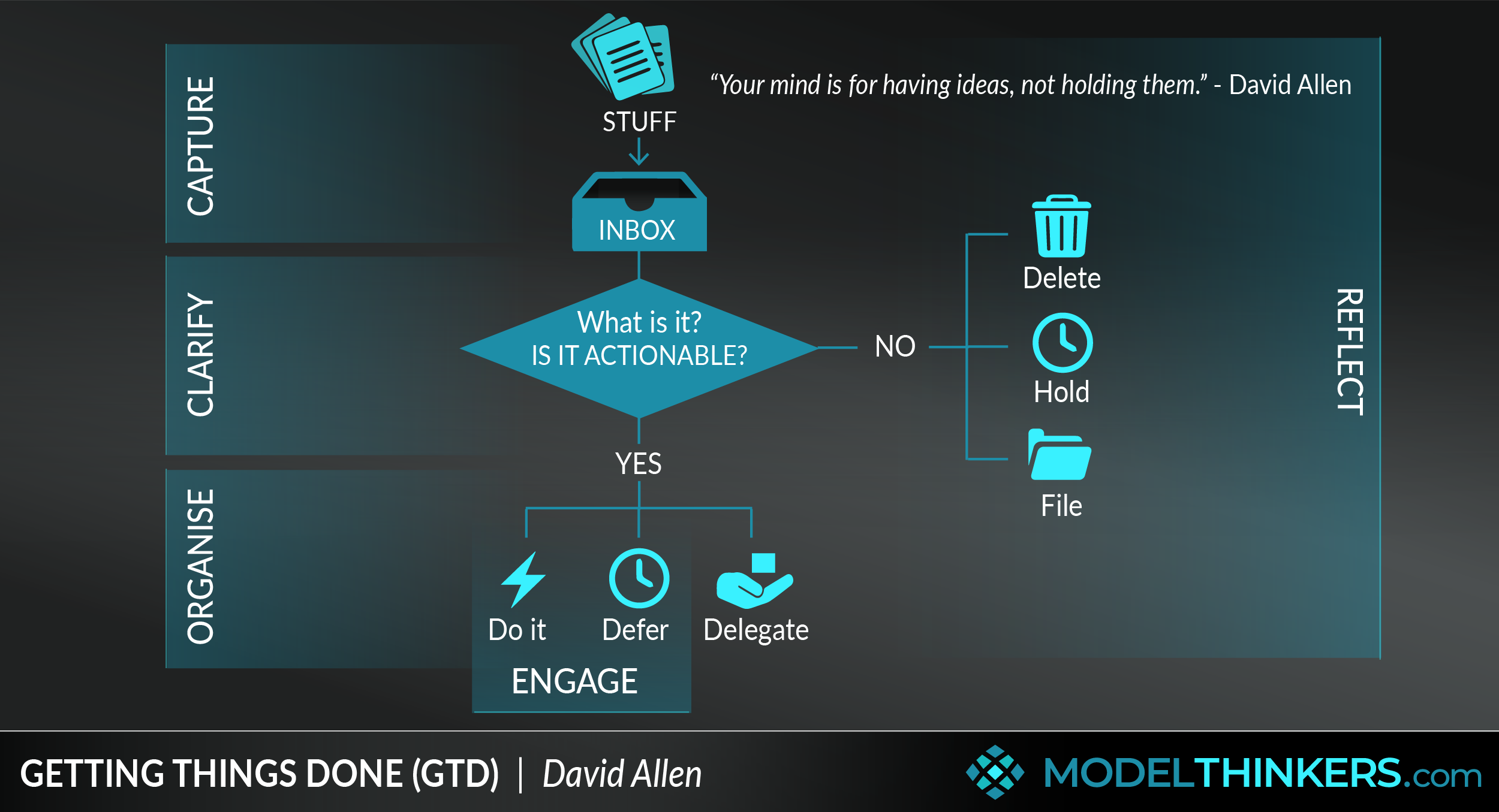
This is a foundational for any productivity-obsessed geek (and if you're reading this then yes, we are talking about you!). GTD was the beginning of the wave of personal productivity that continues today. One of its key strengths is the process of sorting tasks rather than holding them in your mind.
PRIORITISE TASKS
A huge part of prioritisation is about consciously choosing what you work on and what you say no to. Use these models to do that effectively.
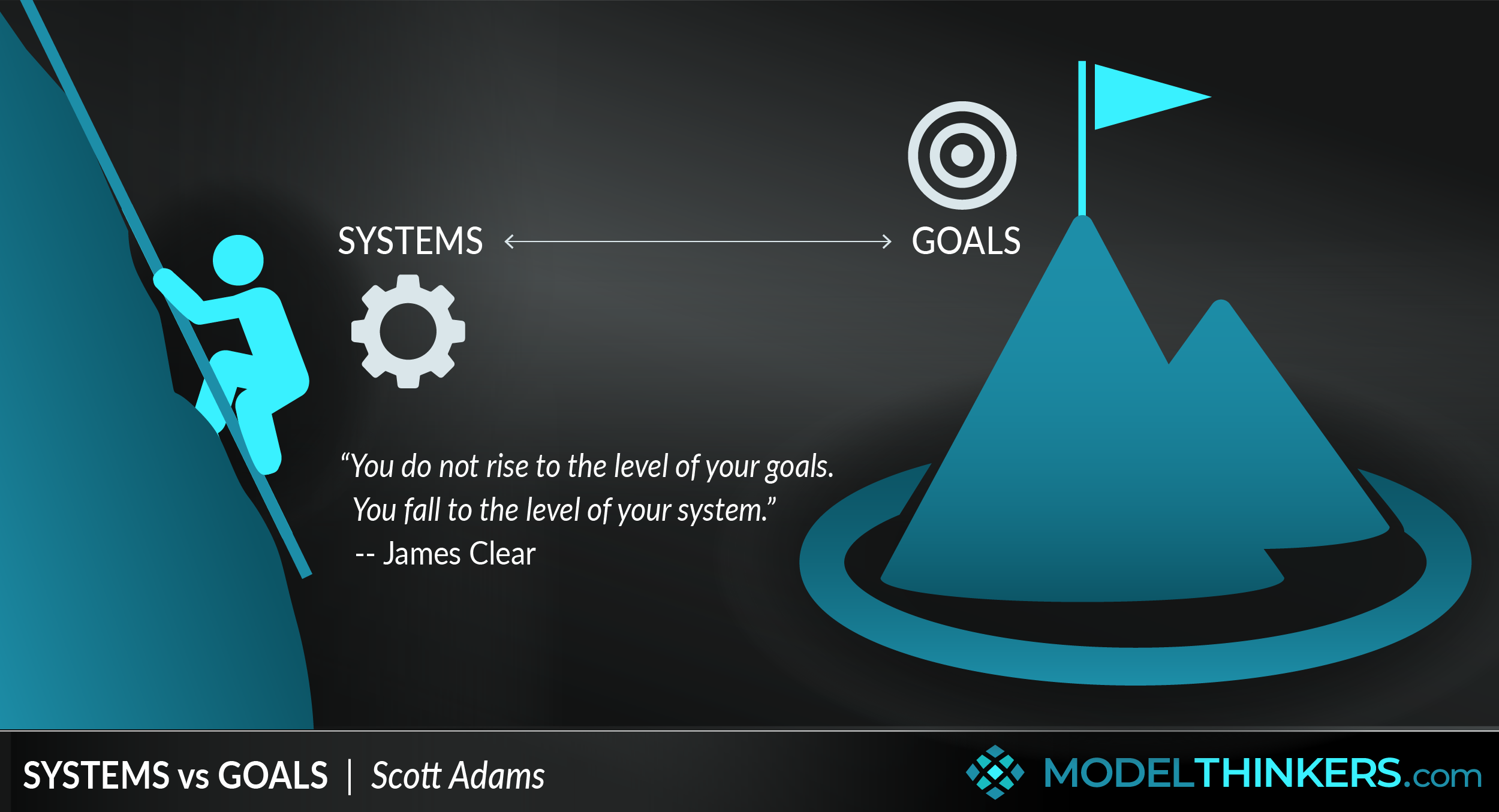
On the topic of embedding regular focused Deep Work, why not take a broader look at your systems? Let go of your obsession on distant goals, and instead consider how you spend each day — what systems, habit and practices do you implement and do they align with what you're trying to achieve?
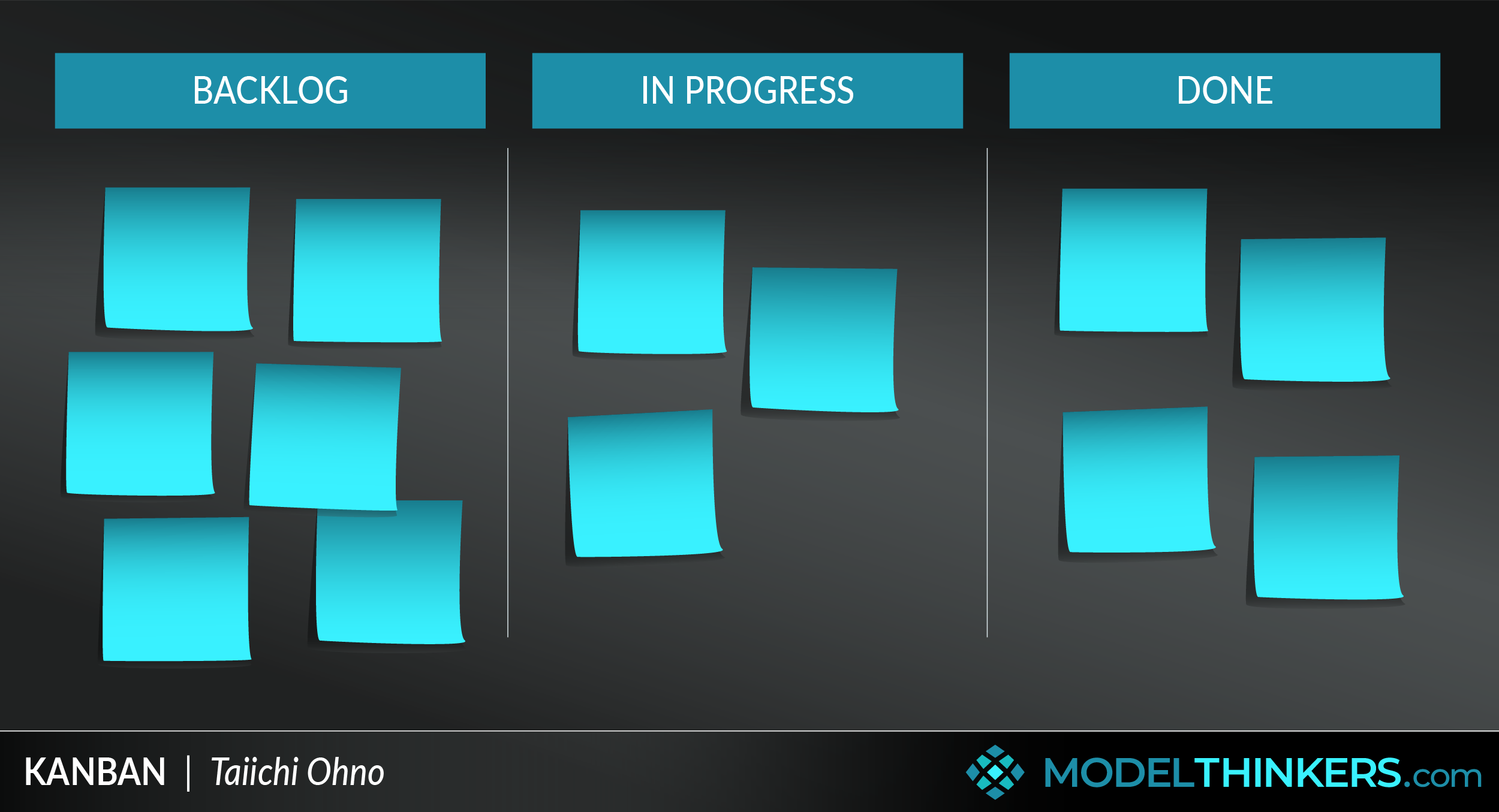
You can just use the Eisenhower Matrix to prioritise tasks but things change and the world is unpredictable. That's where Kanban comes in — part of Agile Methodology, use this simple card sorting system to update priorities, pulling tasks from a 'backlog' that allows greater flexibility and visibility. Sure, it's part of agile teams, but we highly recommend it for personal use too.
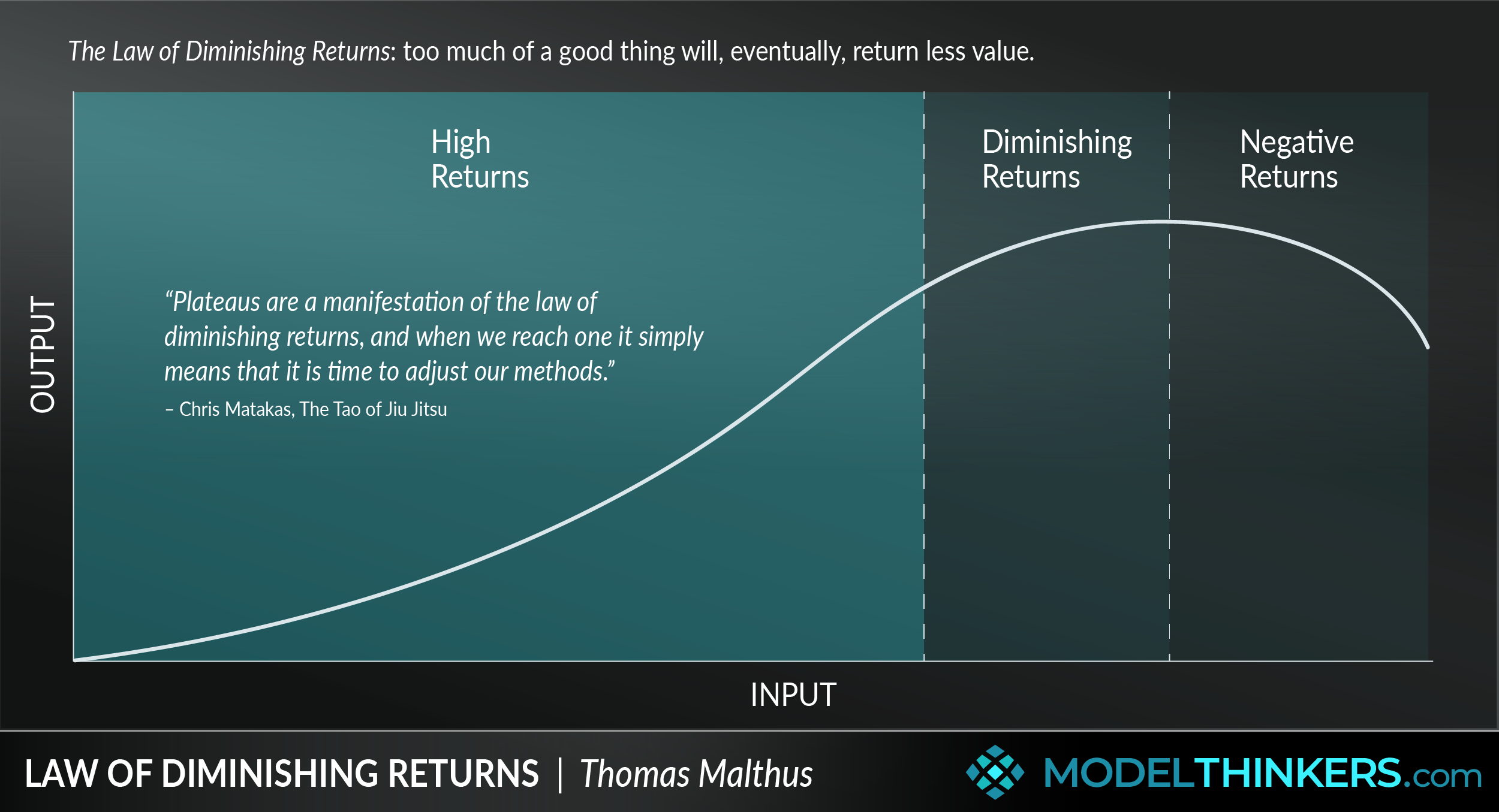

The Law of Diminishing Returns is a cautionary tale that productive investments won't necessarily continue to be productive at scale.
Find out more about Law of Diminishing Returns and add it to your Latticework of Mental Models here.
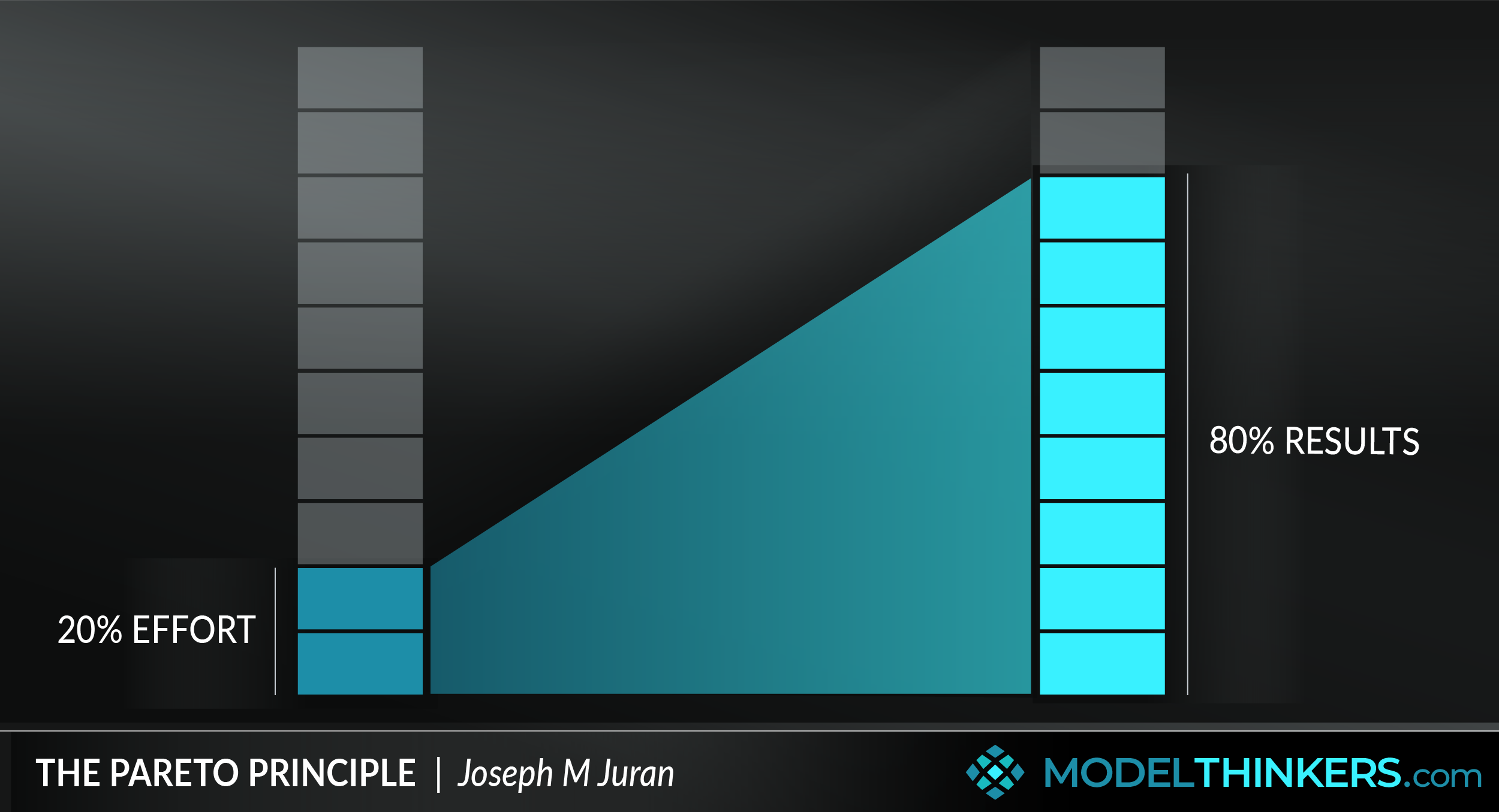
If you're a regular user of ModelThinkers, you'll already know that this is a favourite around here. In this context it's an acknowledgement that you can't get it all done — so instead focus your action on where the highest value returns are. It's an inherent death knoll to perfectionism and a concrete way to apply your understanding of the Law of Diminishing Returns.
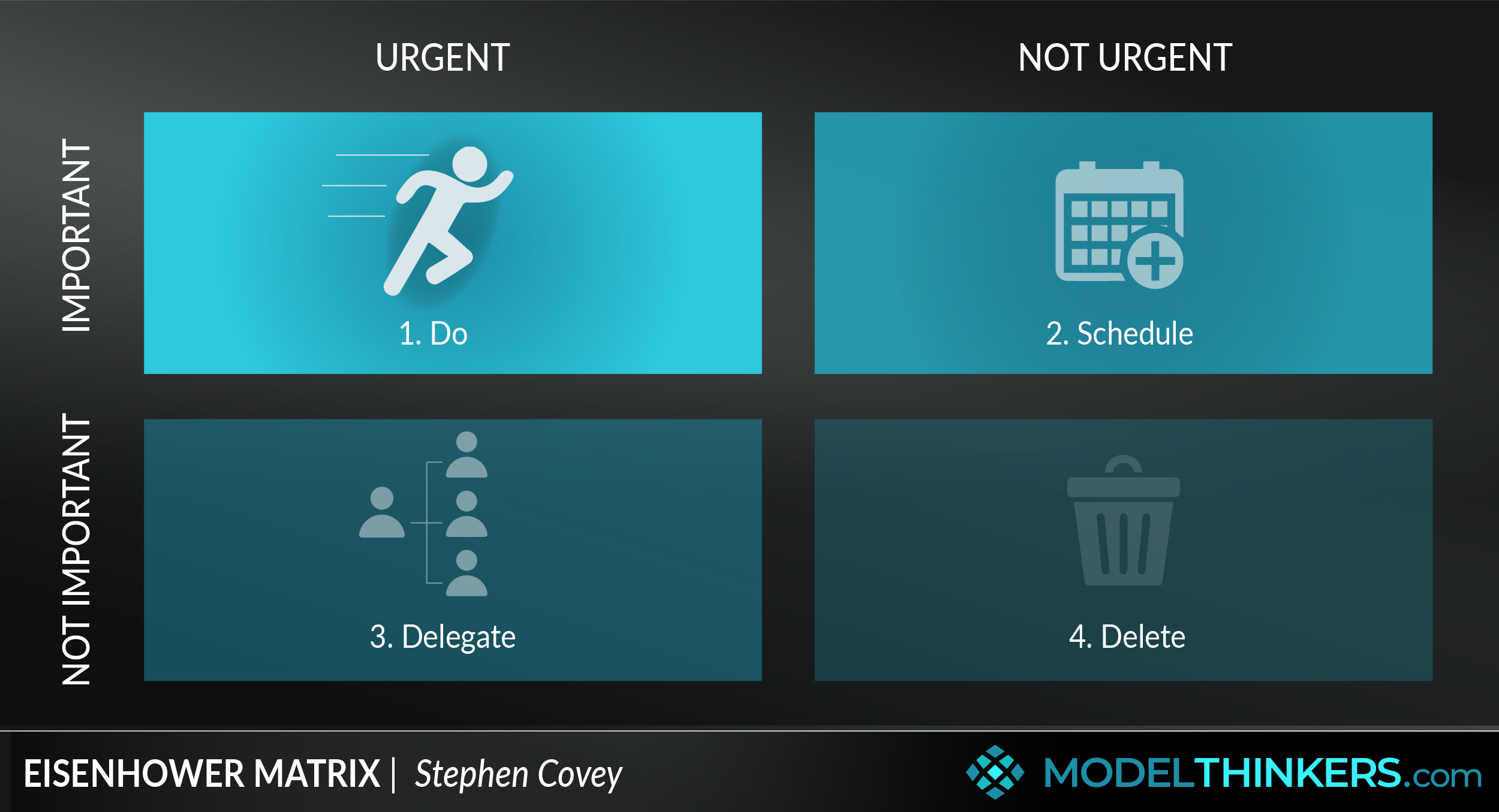
The Eisenhower Matrix is such a simple and powerful model. Simply classify your tasks to focus on urgent and important in the first instance, with the aim of becoming less reactive and moving towards the not urgent and important overtime. It's a reminder that not all tasks are created equal - dare I remind you of Pareto yet again?
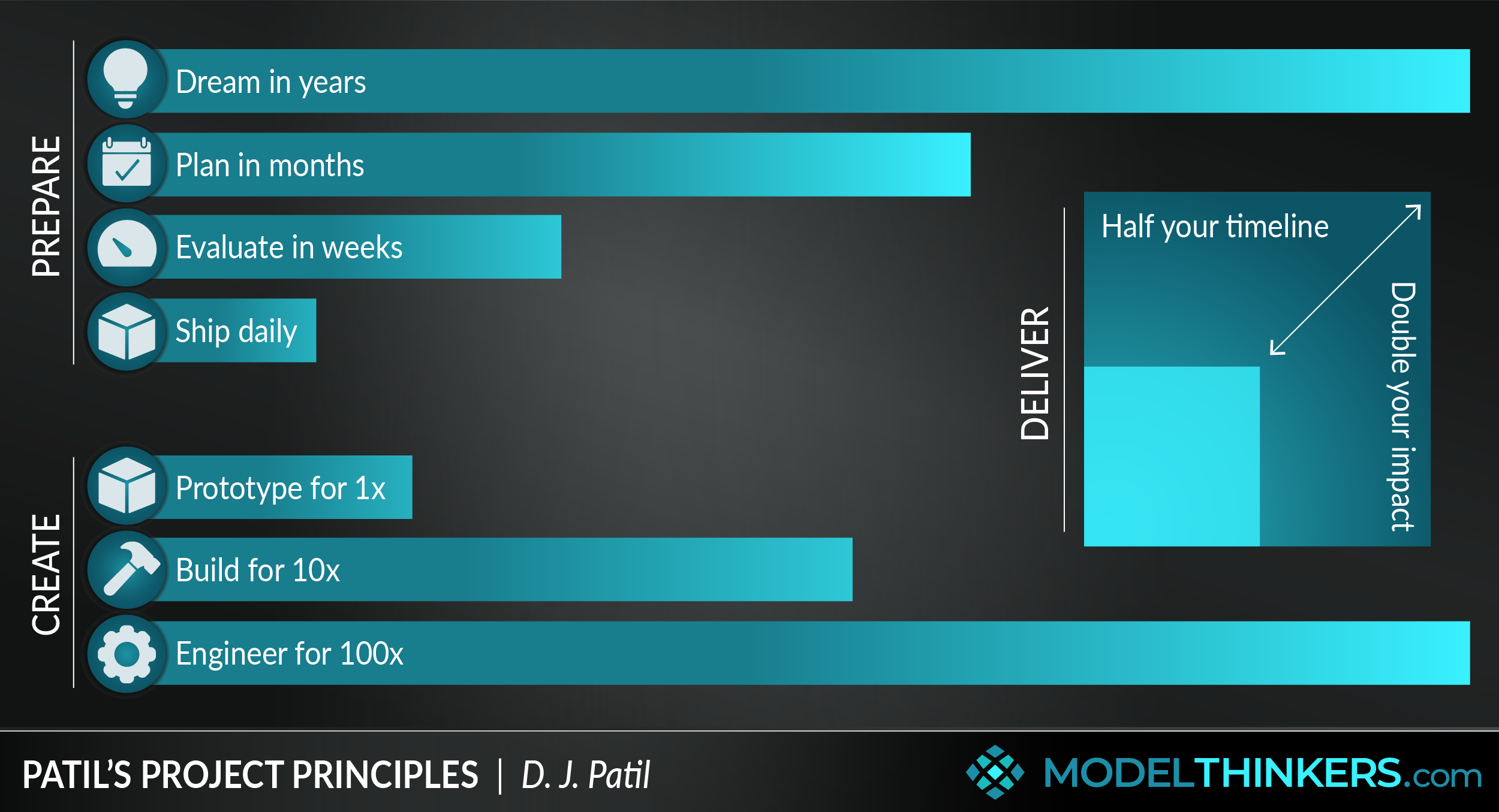
More than prioritisation, this cheat sheet from Obama's Chief Data Scientist serves as a useful guide to be more productive in any project or initiative.
Find out more about Patil's Project Principles and add it to your Latticework of Mental Models here.
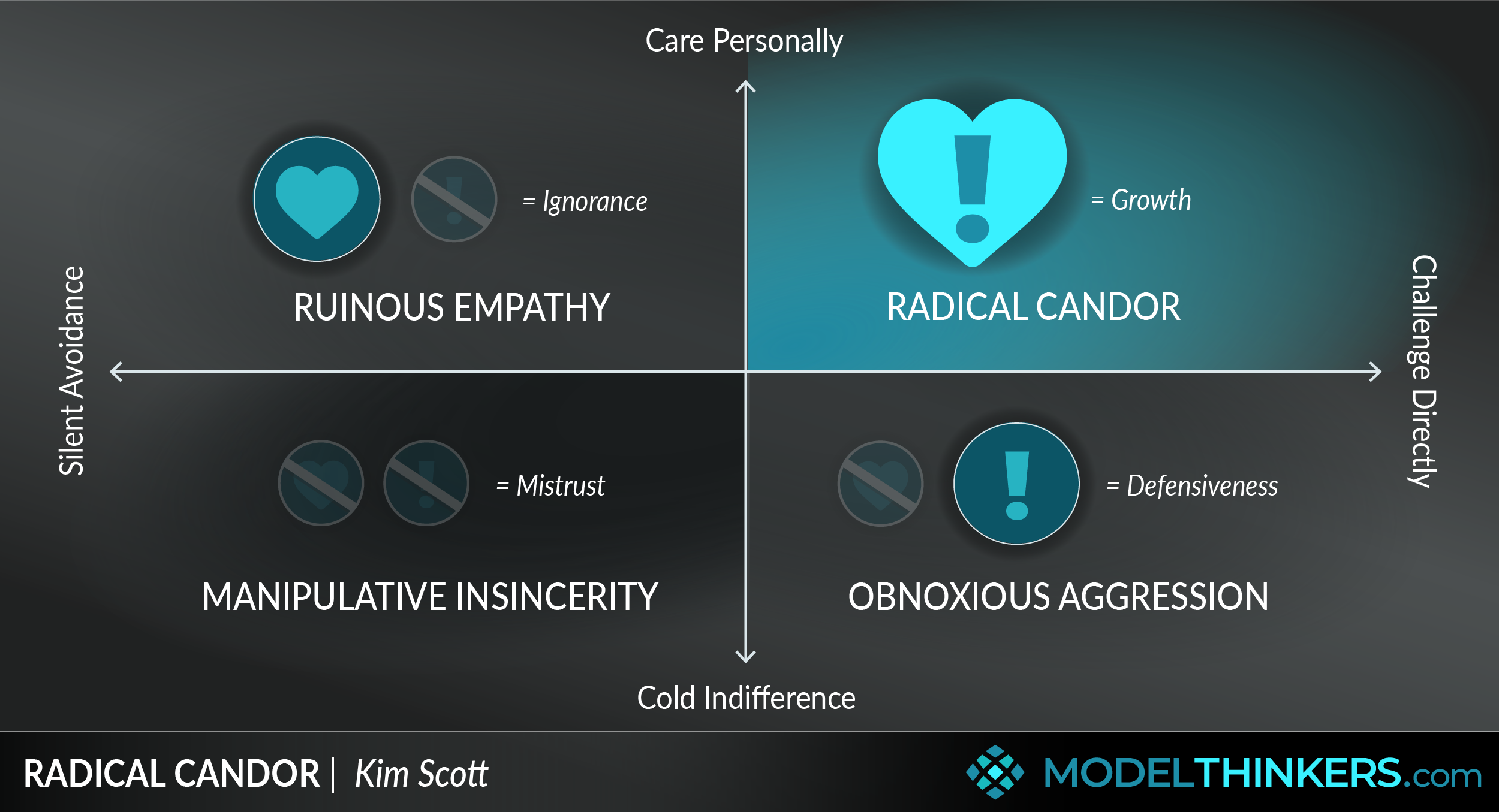
This is not a productivity hack but it's something you're likely going to need. After all, once you've decided on your priorities you're going to have to effectively communicate them and challenge others when they try to pile you up with other work.
PRIORITISE YOUR LIFE
And finally, models to step back from the priorities of the day to ensure that you're headed in the right direction for your life.
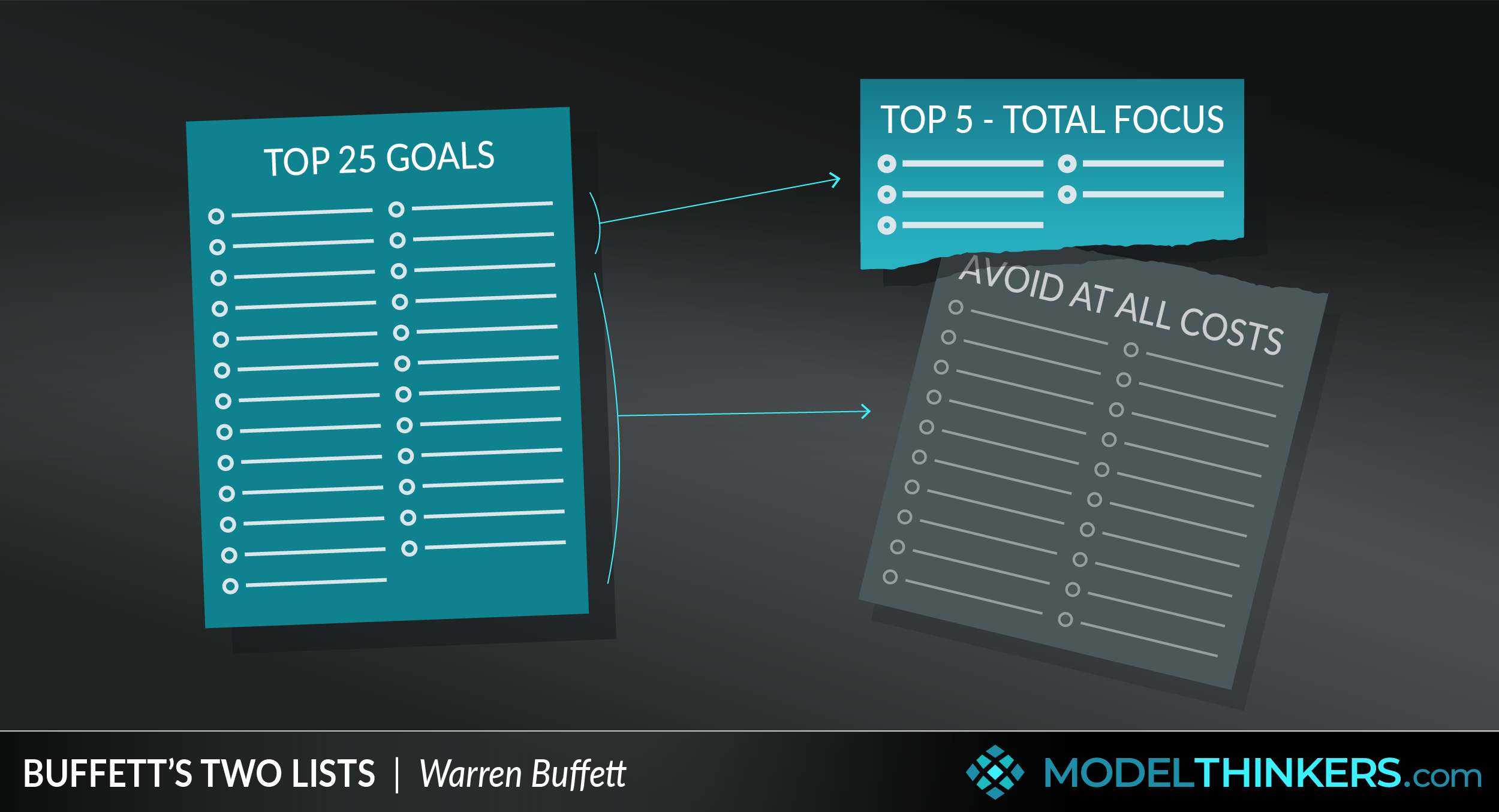
The final model on this list fully embraces what some of the previous models hinted at, ruthless prioritisation. Buffett's advice to his pilot has become a model for absolute focus and applying discipline about what 'not' to do. A key productivity hack indeed.
Premium content
Please do login or sign up to see premium contect
Subscription expired!
Please renew your subscription to access this feature.
 My Notes
My Notes
Delete note
Nothing here yet. Join ModelThinkers and login to be the first to comment.
